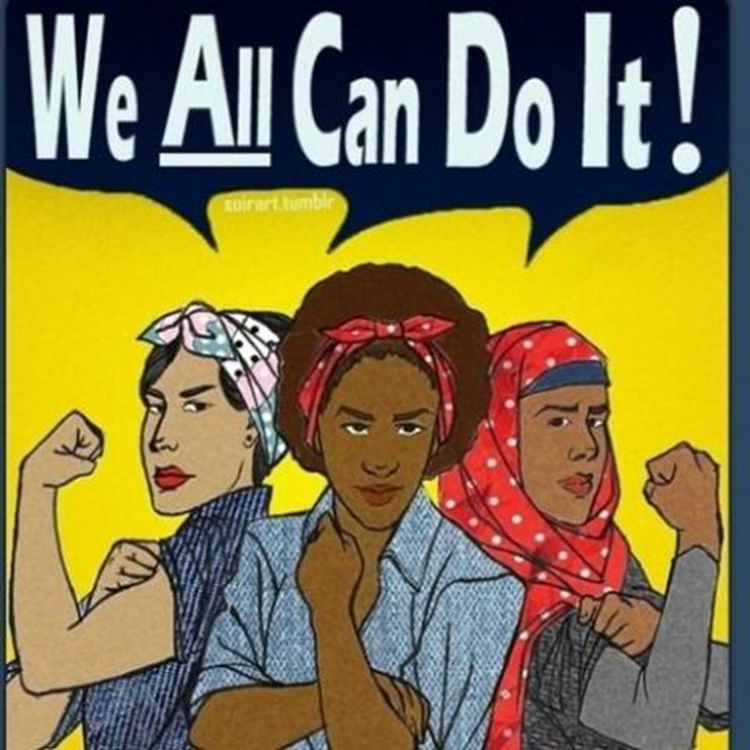
Image credit soirart.tumblr
Hopeful signs of a labor resurgence are everywhere. Despite another decline in the unionized percentage of the labor force and the stalemate in efforts at labor law reform, new frontiers in union organizing have emerged, strikes are on the upswing, public support for unions is the highest it has been since 1965, and acute labor shortages offer greater bargaining power to workers. This Women’s History Month, it is important to recognize the centrality of women to the path forward for labor. Women make up the majority of workers in many of the industries essential to union growth. Women have come forward as leaders of multiple organizing campaigns and strikes. And at the national level, one particular woman, Sara Nelson, has successfully identified and practiced a strategy that challenges the staid, almost defeatist stance prevalent among top union leadership in recent decades.
What’s in it for Today’s Women
Women currently comprise almost half of those covered by a union contract (47.1 percent), just below women’s share of all workers (48.0 percent). These unionized women are significantly better off than their non-unionized sisters. Women covered by a union contract earn on average $195 (or 22.6 percent) more per week than non-unionized women. Higher pay has become even more important in an era of ever-higher housing costs. In 43 states, at least half of the yearly average rent costs could be paid with the yearly union wage advantage. In 12 states, the union wage advantage pays for a full year or more of average rent.
Women’s gains are not simply a matter of higher pay. The rewards of unionization are seen most dramatically in benefits packages usually denied to non-union workers. Pensions are one such benefit. Furthermore—given that women still bear most of the responsibility for family caregiving—health insurance, paid sick time, paid family leave, minimum staffing levels, schedule flexibility, mental health, and workplace safety have become increasingly urgent during the pandemic.
Women Mobilizing
Women have been present in the US labor movement since its beginnings. The earliest mill workers were young women from the rural countryside of New England who formed the Lowell Female Reform Association.
But until recently men held sway within unions; most union members were male, and men monopolized leadership positions at all organizational levels. Not only do women now comprise nearly half of organized labor, but they predominate in industries with strikingly higher unionization rates. For example, 39.8 percent of workers in education, training, and library services are unionized, compared to 10.8 percent of the total workforce.
Today women-dominated unions are often the face of labor militancy. One of the most dramatic episodes in recent times dates to the teacher strikes of 2018 that occurred in Illinois and, surprisingly, in several red states. Then, in 2020, American Airlines’ 21,000-member flight attendants union began a planned 11-day walkout, launching the biggest US airline strike in nearly five years. Women also played essential roles in the strike wave that swept through the country in late 2021. Pandemic-related burnout and high attrition were factors in strikes by nurses at large hospitals in New York and Massachusetts and in a narrowly averted walkout of 25,000 at Kaiser Permanente, California’s largest private medical network. And the trend continues: 8,000 unionized Kroger’s King Soopers employees went on strike this past January to demand higher wages and better working conditions from the country’s largest grocery store chain.
Although manufacturing remains dominated by male workers, women were very active in the large and prolonged strikes at Frito-Lay and Nabisco plants in late 2021. Multiple picket line photos feature smiling women with raised fists. One of the key in-plant organizers in the ongoing effort to unionize Amazon’s Bessemer plant is a women. Having worked previously at a unionized US Pipe facility, Jennifer Bates says she “saw some things that needed to be done to better sustain the workers” at Bessemer. Bessemer workers have also promoted their strike as a means of obtaining racial justice through pay equity and implementing non-discriminatory promotion systems.
A win at Bessemer would represent a breakthrough into unplowed territory for unionization. The same is true for Starbucks employees who have won elections at cafes in New York and Arizona and are attempting to organize at over 100 other outlets in 26 states. Perhaps most unexpected, curators, conservators, educators, and librarians have recently unionized at five prestigious museums, including the Art Institute of Chicago and the Guggenheim.
Women workers have also pushed their unions to tackle non-wage issues of particular importance to them. The Alphabet Workers Union at Google staged a walkout in 2020 to protest sexual harassment, as did workers at twelve McDonald’s restaurants in 2021.
Militancy in Our Own Backyard
In early February, Champaign teachers filed a notification with the Illinois Educational Labor Relations Board of an intent to strike. Unproductively bargaining with management since last May, the Champaign teachers union is especially frustrated by the administration’s refusal to withdraw a proposal to extend the workday. In a statement given to the News-Gazette, the union stated: “At a time when students need stability and targeted supports, the district insists on lengthening the school day by 50 minutes but still hasn’t proposed how they would handle related staffing, logistics, or transportation needs. Instead, teachers are asking for a collaborative plan that addresses the systemic issues and does the restorative work necessary to address the achievement gap in Champaign schools.”
A new bargaining session will occur in March and the union cannot strike until March 21 at the earliest. If a strike does occur, the public should be prepared to offer support in whatever way the union proposes.
Could a Women at the Top Make a Difference?
When Richard Trumka died late last year, the presidency of the AFL-CIO, the combined federation of national unions, went to a woman for the first time. Emerging from the International Brotherhood of Electrical Workers, Liz Shuler had served as secretary-treasurer of the federation since 2009.
While it is gratifying to have a woman at the top of the combined labor movement, Shuler may well face a challenger for her position this June. As her past record suggests, Sara Nelson, Shuler’s potential challenger, is a dynamic, forward-looking leader. In strong contrast to much of labor’s top leadership, she is strongly committed to militant action and intra-union solidarity to achieve victories.
Nelson has been President of the 50,000-strong flight attendants union since 2014. She first achieved national attention in January, 2019, when in a speech before the AFL-CIO she called for a general strike in protest of then-president Trump’s government shutdown. She went beyond arguing on behalf of her own membership by talking about the shutdown’s impact on almost a million locked-out workers or those forced to work without pay. Within the week, ten air traffic controllers heeded her call and staged a sick-out. Faced with a grounding of the air fleet, Trump blinked and ended the shutdown.
When COVID-19 arrived, Nelson and her union lobbied for a relief package for flight attendants to maintain jobs, pay, and health insurance. In March, 2020, the AFA celebrated the inclusion of much, though not all, of what they wanted in the CARES Act. Left out of CARES were the more radical demands requiring limits on bonuses for airline executives and bans on stock buybacks and dividends.
More recently, Nelson has appeared alongside Bernie Sanders on a Bessemer informational picketing line. In speeches and media outlets, she has repeatedly talked about how years of erosion of living standards have led to anger and frustration among working people and that the labor movement must channel this discontent by committing more resources to new organizing campaigns. Furthermore, she has repeated her call for more intra-union solidarity, up to and including consideration of general strikes.
If Nelson runs and wins the federation presidency, it will not be a panacea for organized labor. There are multiple forces at work to undercut labor’s ability to expand, not least the rise of anti-democratic forces, especially since Trump’s win of the presidency. Within the AFL itself, she will be pitted against entrenched labor leaders who, at best, are cautious and risk-averse. They remain loathe to undermine ties to a Democratic Party filled with legislators fearful of labor militancy and its impact on their corporate allies. But Nelson offers hope and as she reminds us that “solidarity is a force greater than gravity.”

584 total views, 2 views today